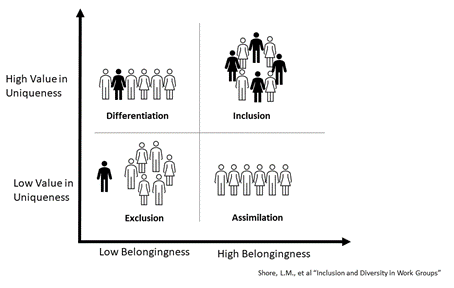This special blog is part of a series tied to the release of the Cisco Developer Relations “Full Stack Wellness” program which is to be available in June as an open source tool for everyone.
The developer world has always been full of community-based activity. From hackathons to code sharing and open source, working together and reaching out to other developers is part of the fabric of code development. There are lots of reasons why this profession has such a communal aspect. Developers collaborate on projects and share knowledge, like best practices and use cases. Many use the community for learning and skill development. Others rely on the community for support and help; maybe they are working through questions on APIs or are curious about how to implement their code. People might come to the community to find motivation and inspiration. They might also come to a community to network with other developers to connect for work opportunities or to learn about what others are doing.
You can see that developer activity is communal by looking at some of the tools and sites we use. GitHub, where developers can collaborate on software projects, has over 73 million developers. Fourteen million developers go to Stack Overflow to find answers to a wide variety of questions. While Cisco DevNet has not quite reached those levels yet, we have over 600,000 members as of May 2022 and are continuing to grow, and our Cisco developer community forums bring together over 45,000 unique visitors every month. Outside of these community platforms, connecting with others is a major part of being a developer. Online meetups, podcasts, and streaming chats are very popular, and live meet-ups and conferences are all part of the developer community experience.
Diversity creates dynamic conversations
Having a diverse community brings out a wide spectrum of ideas. The community is made up of developers with many levels of experience, from students to subject matter experts. You will find newbies asking questions, and the voices of experience helping find the answers. Also, different geographic experiences can alter the perspectives of the community, from the effects of infrastructure and availability of services to situations based on climate.
Cultural dimensions also play a role. In reference to the Hofstede scale, people in difference cultures have varying views about their impact on a team, such as whether they are more focused on the individual or the collective group, their relationship with management and clients (called power distance), competitiveness, and risk tolerance, among other traits. These cultural attributes provide a wealth of viewpoints across the developer world.
Inclusion invites collaboration
How are we able to collaborate with all these diverse ideas and perspectives in the developer space? The key is to make everyone feel included. There are a few things that community members can consider in making their communities more inclusive. Building trust is a primary focus of an inclusive community. If people have trust in the community, they will be more likely to share their ideas. This foundation of trust builds a feeling of safety. Respectful behavior is also important, because when people are treated with respect, they are more likely to contribute. Also, people appreciate to be recognized, and this helps them feel that they are doing something helpful in the community.
Building a sense of belonging in the developer community
To get a community to a state where the members have a strong sense of belonging, Shore et al. (2011) proposed the model shown in the chart below to describe diversity and inclusion in work groups. As with most quadrant charts, the best outcome is up and to the right.

- To build belonging, you must recognize the individual. If the community does not recognize the individual and has a low level of belonging, people can feel excluded.
- If there is a value on uniqueness but not belonging, then active members stand out as differentiated from the others in the community. While some contributors stand out, others might not feel comfortable sharing their ideas.
- If there is a good sense of belonging but a low value on uniqueness, then all members are just assimilated into the community, and there might be a low level of engagement. Different ideas are not shared.
- What we really want is to both recognize the individual and create a sense of belonging, where people feel energized to contribute and have a feeling of trust and safety when sharing with other community members. This is where we have a real inclusive community.
In conclusion
There are several steps you can take to build a sense of belonging and inclusion in your community:
- Be helpful
- Be respectful, as that helps build the feelings of safety and trust
- Be a consistent contributor. Post new stuff, answer questions. Engage with the other members. This helps add energy and gives people a reason to come back
- Celebrate success! Recognize other community members and what they contribute.
References
Hofstede, G. (n.d.). The 6 dimensions model of national culture by Geert Hofstede. Geerthofstede.Com. Retrieved May 6, 2022, from https://geerthofstede.com/culture-geert-hofstede-gert-jan-hofstede/6d-model-of-national-culture/
Shore, L. M., Randel, A. E., Chung, B. G., Dean, M. A., Holcombe Ehrhart, K., & Singh, G. (2011). Inclusion and diversity in work groups: A review and model for future research. Journal of management, 37(4), 1262-1289.
We’d love to hear what you think. Ask a question or leave a comment below.
And stay connected with Cisco DevNet on social!
LinkedIn | Twitter @CiscoDevNet | Facebook | Developer Video Channel

CONNECT WITH US